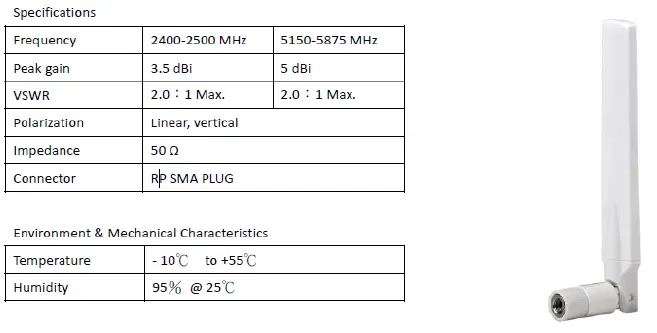
Universal Global Scientific Industrial WP1-2020-A1 Dual-Band Wi-Fi + BT 5.1 Module

Introduction and Feature
- Introduction
WP1-2020-A1 is 2×2 802.11a/b/g/n/ac dual-band Wi-Fi + BT 5.1 Module. The Wi-Fi subsystem contains 802.11a/b/g/n/ac MAC /Baseband /Radio. The Bluetooth subsystem contains Baseband/Radio/Link controller. The module is a small size module based on metal lid shielding package that provides full function of 802.11a/b/g/n/ac and Bluetooth 5.1 in a tiny module via 75 pins LGA footprint. - Feature
1) Full IEEE 802.11a/b/g/n/ac compatibility with enhanced performance.
2) Support dual-band 2T2R mode. 20/40M bandwidth in 2.4G band and 20/40/80M bandwidth in 5G band. IEEE 802.11 d/e/h/i/j/k/r/v/w support.
3) Support BT5.1 with BLE2M, BLE long range and compatible BT4.2. Support 7 simultaneous active ACL connection and 16 BLE links.
4) Frequency Band
2.4 to 2.5GHz
4.9 to 5.845GHz
5) Operating Temperature – 10°C to 65°C
6) Relative Humidity range
Less than 60% for Storage
Less than 85% for Operation
User Mode (WiFi)
Boot up PC or NB with the flash installed Linux OS.
5V for EUT from the power supply.
Type “sudo su” on Terminal in Linux to get root authority. EUT could be controlled if “mmc0: new high speed SDIO card at address 0001” is shown after typing “dmesg.”
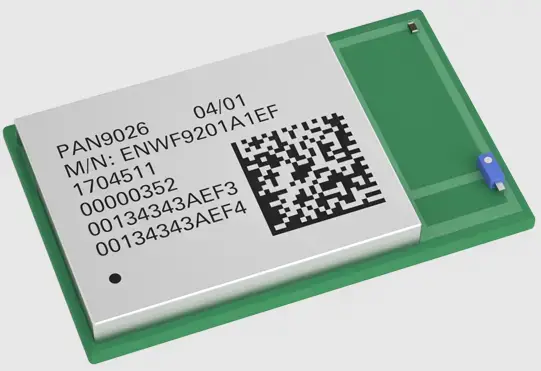 Type “cd /usr” and then “insmod wlan_mt7663_sdio.ko” to enable WiFi function of EUT.
Type “cd /usr” and then “insmod wlan_mt7663_sdio.ko” to enable WiFi function of EUT. 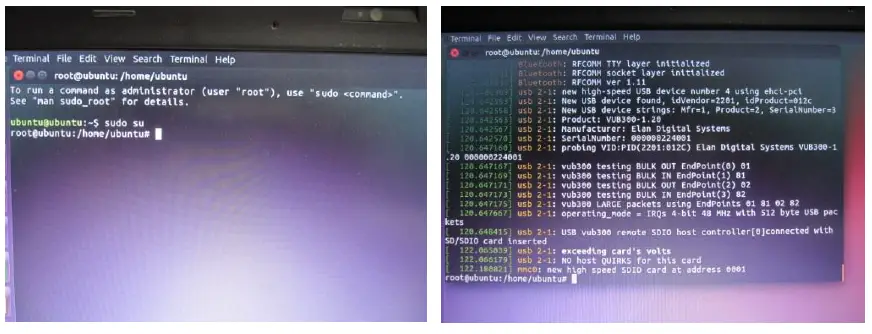 Link to AP with another PC or NB through Ethernet cable, open DHCP function in it and record the IP address.
Link to AP with another PC or NB through Ethernet cable, open DHCP function in it and record the IP address.
Click WiFi icon on the upper-right corner on Linux and disable WiFi. 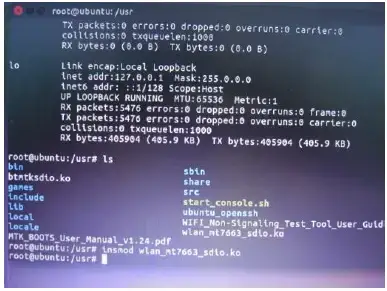 After disabling WiFi, then enable Wi-Fi, and Wi-Fi Networks (Intel….) and Wi-Fi Networks (MediaTek) would be visible. The Wi-Fi Networks (MediaTek) is device name of EUT.
After disabling WiFi, then enable Wi-Fi, and Wi-Fi Networks (Intel….) and Wi-Fi Networks (MediaTek) would be visible. The Wi-Fi Networks (MediaTek) is device name of EUT. 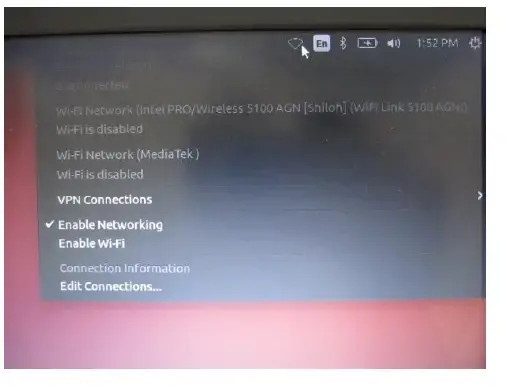 Select the SSID you would link to by Wi-Fi Networks (MediaTek).
Select the SSID you would link to by Wi-Fi Networks (MediaTek). 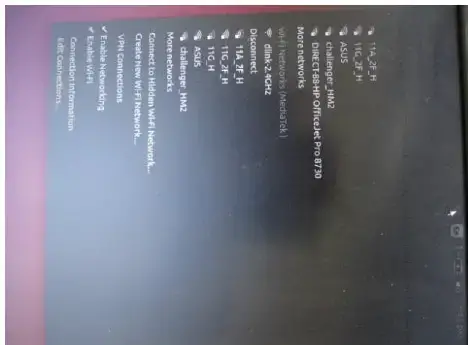 Click Connection Information, check the IP address and record it.
Click Connection Information, check the IP address and record it. 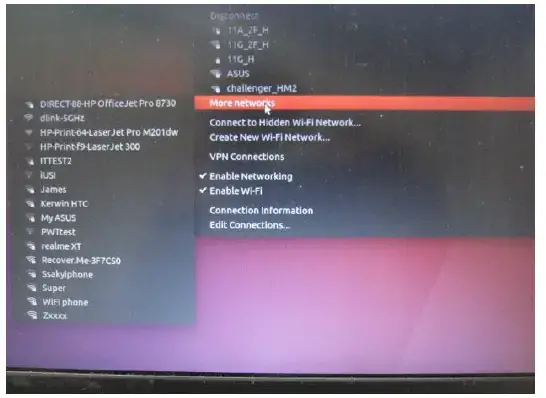 Copy iperf tools for Linux on Linux Desktop and then use the command below to copy the tools in usr file.
Copy iperf tools for Linux on Linux Desktop and then use the command below to copy the tools in usr file.
cp /home/ubuntu/Desktop//iperf /usr/
Use the command below to install the tools in cd /usr path. apt install iperf
Enter the command below. chmod 777 iperf
Enable the function for possible applition as below on the 2 PCs or NBs. iperf client side
- iperf -c IP -t 10000 -i 1
- iperf server side
- iperf -s -i 1
Ping function is also usable and ctrl+c could stop the ping function. ping IP
cTX/RX (EDR-BT2.0)
Boot up PC or NB with the flash installed Linux OS.
5V for EUT from the power supply.
Type “sudo su” on Terminal in Linux to get root authority. EUT could be controlled if “mmc0: new high speed SDIO card at address 0001” is shown after typing “dmesg.”
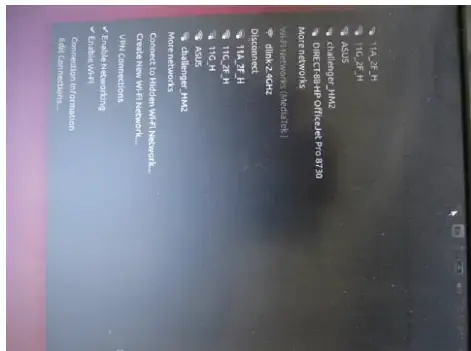 Copy “btmtksdio_user.ko” file onto Linux Desktop and use the below command to copy “btmtksdio_user.ko” in the “usr” file.
Copy “btmtksdio_user.ko” file onto Linux Desktop and use the below command to copy “btmtksdio_user.ko” in the “usr” file.
cp /home/ubuntu/Desktop/btmtksdio_user.ko /usr/
Search “BT device” by the below command. modprobe hci_uart insmod btmtksdio_user.ko
Pair EUT to the BT device to be linked as shown below. 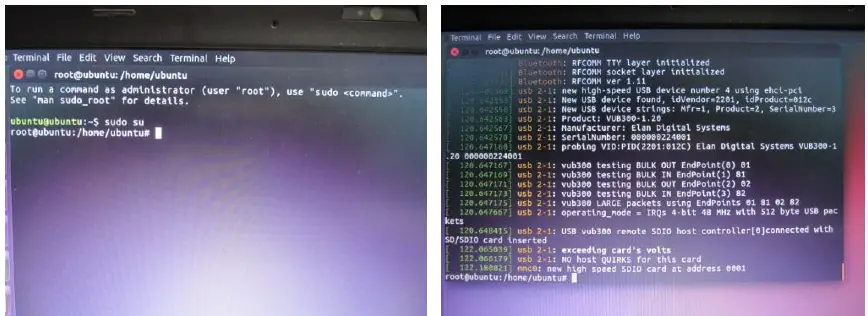 After pairing, check the MAC address of the BT device in Bluetooth Settings.
After pairing, check the MAC address of the BT device in Bluetooth Settings.
Use the command “hciconfig” to check the hci number of EUT. For each number shown “Bus:
SDIO”, it would be the one of EUT. 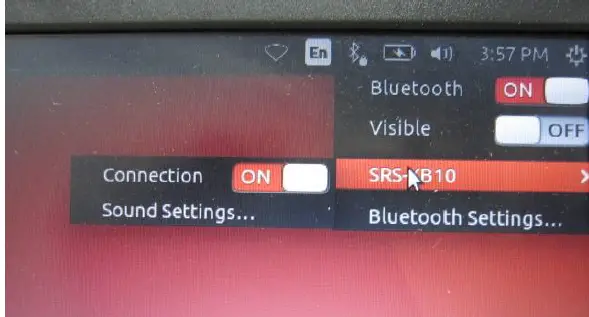 Replace MAC (such as B8:D5:0B:2E:30:48) and hci number (such as hci1) with the actual ones in the below command and the ping function with BT link would be enabled. while [ -z `pidof l2ping` ]; do sudo l2ping -i hci1 B8:D5:0B:2E:30:48; sleep 3; done
Replace MAC (such as B8:D5:0B:2E:30:48) and hci number (such as hci1) with the actual ones in the below command and the ping function with BT link would be enabled. while [ -z `pidof l2ping` ]; do sudo l2ping -i hci1 B8:D5:0B:2E:30:48; sleep 3; done
Antenna Trace Design
WLAN WiFi chain0/chain1 Top layer
Trace length
WiFi chain0 (956.66mils) WiFi chain1 (871.31mils) 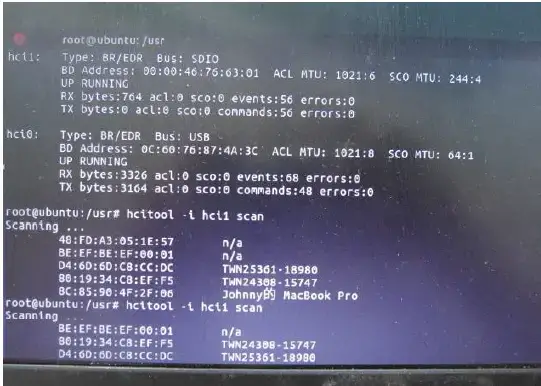 WLAN BT
WLAN BT
Top layer
BT_ANT (1425.34mils) 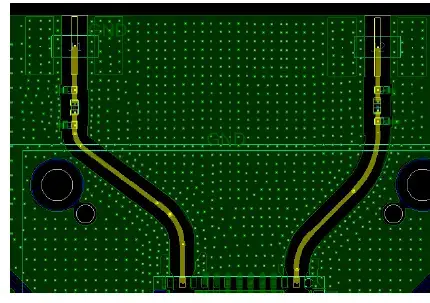 RF traces width : 17.5 mils, spacing 35 mils PCB Stack-up for reference
RF traces width : 17.5 mils, spacing 35 mils PCB Stack-up for reference
PCB stack (1-2-1) as below:  Total Thickness: 55.1mils +/- 10% (1400 um +/- 10%)
Total Thickness: 55.1mils +/- 10% (1400 um +/- 10%)
*Note : The thickness of Solder Mask on top side is necessary to be controlled within 25um
The Land Pattern and Dimensions should be in compliance with USI’s Standard PCB Design. The characteristics of products may vary depending on the pattern drawing method, grounding method, land dimensions, land forming method of the NC terminals and the PCB material and thickness. Therefore, be sure to verify the characteristics in the actual set. When using non-standard lands, contact Universal Global Scientific Industrial Co., Ltd. Beforehand. 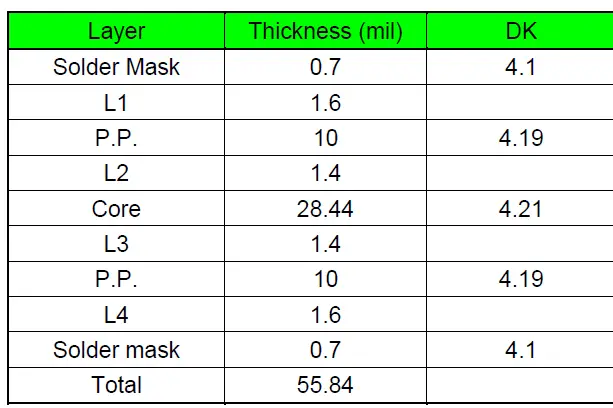 USI uses various test mode programs for test set up which operate separate from production firmware. Host integrators should contact USI for assistance with test modes needed for
USI uses various test mode programs for test set up which operate separate from production firmware. Host integrators should contact USI for assistance with test modes needed for
module/host compliance test requirements.
The modular transmitter is only FCC authorized for the specific rule parts (i.e., FCC transmitter rules) listed on the grant, and that the host product manufacturer is responsible for compliance to any other FCC rules that apply to the host not covered by the modular transmitter grant of certification. If the grantee markets their product as being Part 15 Subpart B compliant (when it also contains unintentional-radiator digital circuity), then the grantee shall provide a notice stating that the final host product still requires Part 15 Subpart B compliance testing with the modular transmitter installed.
Regulatory
This module is intended for OEM integrators under the following conditions:
- Ensure that the end-user has no manual instructions to remove or install module.
- This module is certified pursuant to Part 15 rules section 15.247, 15.407 and RSS-247.
- This module has been approved to operate with the antenna types listed below, with the maximum permissible gain indicated.
| Frequency Band | Antenna Type | Model Number | Gain(dBi) |
| 2400-2483.5MHz; BT | Dipole | RFA‐25‐C53‐B32C255V2 | 3.5 |
| 5150-5850MHz | 5 |
US
This device complies with Part 15 of the FCC Rules. Operation is subject to the following two conditions: (1) This device may not cause harmful interference, and (2) this device must accept any interference received, including interference that may cause undesired operation.
This equipment has been tested and found to comply with the limits for a Class B digital device, pursuant to Part 15 of the FCC Rules. These limits are designed to provide reasonable protection against harmful interference in a residential installation. This equipment generates, uses and can radiate radio frequency energy and, if not installed and used in accordance with the instructions, may cause harmful interference to radio communications.
However, there is no guarantee that interference will not occur in a particular installation. If this equipment does cause harmful interference to radio or television reception, which can be determined by turning the equipment off and on, the user is encouraged to try to correct the interference by one or more of the following measures:
- Reorient or relocate the receiving antenna.
- Increase the separation between the equipment and receiver.
- Connect the equipment into an outlet on a circuit different from that to which the receiver is connected.
- Consult the dealer or an experienced radio/TV technician for help.
FCC Caution: Any changes or modifications not expressly approved by the party responsible for compliance could void the user’s authority to operate this equipment.
This device and its antenna(s) must not be co-located or operating in conjunction with any other antenna or transmitter.
Radiation Exposure Statement:
This equipment complies with FCC radiation exposure limits set forth for an uncontrolled environment. This equipment should be installed and operated with minimum distance 20cm between the radiator & your body.
This device is intended only for OEM integrators under the following conditions:
- The antenna must be installed such that 20 cm is maintained between the antenna and users, and
- The transmitter module may not be co-located with any other transmitter or antenna.
While the 2 conditions above are met, further transmitting tests won’t be required. However, the OEM integrator shall still meet those additional compliance tests for the end products with the module installed.
This module has been approved under stand-alone configuration.
OEM integrator has to limit the operation channels in channel 1-11 for 2.4GHz band.
IMPORTANT NOTE: In the event that these conditions can not be met (for example certain laptop configurations or co-location with another transmitter), then the FCC authorization is no longer considered valid and the FCC ID can not be used on the final product. In these circumstances, the OEM integrator will be responsible for re-evaluating the end product (including the transmitter) and obtaining a separate FCC authorization.
End Product Labeling
This transmitter module is authorized only for use in device where the antenna may be installed such that 20 cm may be maintained between the antenna and users. The final end product must be labeled in a visible area with the following: “Contains FCC ID: COF-WMBACMT63”. The grantee’s FCC ID can be used only when all FCC compliance requirements are met.
The end product shall bear the following 15.19 statement: This device complies with part 15 of the FCC Rules. Operation is subject to the following two conditions: (1) This device may not cause harmful interference, and (2) this device must accept any interference received, including interference that may cause undesired operation.
Manual Information to the End User
The OEM integrator has to be aware not to provide information to the end user regarding how to install or remove this RF module in the user’s manual of the end product which integrates this module.
The end user manual shall include all required regulatory information/warning as show in this manual.
This device is intended only for OEM integrators under the following conditions:
- The antenna must be installed with 20 cm is maintained between the antenna and users in mobile or fixed applications.
- The Antenna for Module (COF-WMBACMT63) is detachable and the maximum antenna gain allowed for use with this device is 3.5 [email protected] band & 5dBi@5GHz band.
- The transmitter module may not be co-located with any other transmitter or antenna.
- OEM integrators Must demonstrate SAR tests and meet compliance before end-product with module (COF-WMBACMT63) marketed in portable application.
While the 2 conditions above are met, further transmitting tests won’t be required. However, the OEM integrator shall still meet those additional compliance tests for the end products with the module installed.
OEM integrators Must demonstrate Part 15B test and meet compliance before end-product with module (COF-WMBACMT63) marketed.
Canada
This device complies with ISED’s licence-exempt RSSs. Operation is subject to the following two conditions: (1) This device may not cause harmful interference, and (2) this device must accept any interference received, including interference that may cause undesired operation.
Radiation Exposure Statement:
This equipment complies with ISED radiation exposure limits set forth for an uncontrolled environment. This equipment should be installed and operated with minimum distance 20cm between the radiator & your body.
.This device is intended only for OEM integrators under the following conditions: (For module device use)
- The antenna must be installed such that 20 cm is maintained between the antenna and users, and
- The transmitter module may not be co-located with any other transmitter or antenna.
While the 2 conditions above are met, further transmitting tests won’t be required. However, the OEM integrator shall still meet those additional compliance tests for the end products with the module installed.
IMPORTANT NOTE
In the event that these conditions can not be met (for example certain laptop configurations or co-location with another transmitter), then the Canada authorization is no longer considered valid and the IC ID can not be used on the final product. In these circumstances, the OEM integrator will be responsible for re-evaluating the end product (including the transmitter) and obtaining a separate Canada authorization.
End Product Labeling
This transmitter module is authorized only for use in device where the antenna may be installed such that 20 cm may be maintained between the antenna and users. The final end product must be labeled in a visible area with the following: “Contains IC:10293A-WMBACMT63”.
Manual Information to the End-User
The OEM integrator has to be aware not to provide information to the end user regarding how to install or remove this RF module in the user’s manual of the end product which integrates this module.
The end-user manual shall include all required regulatory information/warning as show in this manual.
This radio transmitter [IC: 10293A-WMBACMT63] has been approved by Innovation, Science and Economic Development Canada to operate with the antenna types listed below, with the maximum permissible gain indicated. Antenna types not included in this list that have a gain greater than the maximum gain indicated for any type listed are strictly prohibited for use with this device.
| Frequency Band | Antenna Type | Model Number | Gain(dBi) |
| 2400-2483.5MHz; BT | Dipole | RFA‐25‐C53‐B32C255V2 | 3.5 |
| 5150-5850MHz | 5 |
| Frequency Band | Antenna Type | Model Number | Gain(dBi) |
| 2400-2483.5MHz; BT | Dipole | RFA‐25‐C53‐B32C255V2 | 3.5 |
| 5150-5850MHz | 5 |
The device for operation in the band 5150-5250 MHz is only for indoor use to reduce the potential for harmful interference to co-channel mobile satellite systems.
